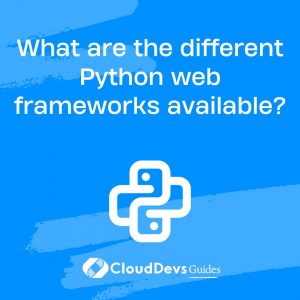What are the different Python web frameworks available?
Python boasts a rich ecosystem of web frameworks that cater to various development needs, whether it’s building a small web application or a full-fledged, complex system. Here are some of the prominent Python web frameworks:
- Django:
Often dubbed the “web framework for perfectionists with deadlines,” Django is a high-level, full-stack web framework that encourages rapid development. It follows the “batteries-included” philosophy, offering an ORM, an admin interface, and many built-in features out-of-the-box.
- Flask:
A lightweight, micro web framework, Flask gives developers more flexibility in terms of how they structure their application and which components they use. This “micro” characteristic refers to the framework’s modularity and not necessarily its capability.
- Pyramid:
Known for its modularity, Pyramid is a flexible framework that allows developers to choose the components they want to use. It’s suitable for both small and large applications.
- FastAPI:
A modern, fast web framework based on standard Python type hints. FastAPI is built on top of Starlette, making it asynchronous and highly performant. It’s particularly known for quickly building APIs.
- Tornado:
Originally developed at FriendFeed (acquired by Facebook), Tornado is known for its high performance. It’s an asynchronous networking library and can handle long-lived network connections, making it ideal for WebSockets, long polling, etc.
- CherryPy:
An object-oriented web framework, CherryPy allows developers to build web applications in a similar way they would write Python programs. It’s a minimalist web framework, meaning it offers the basics to get a web server running.
- Web2py:
This is a full-stack framework that comes with its own web-based IDE and ticketing system for error management. It follows a ticketing approach to manage errors.
Each of these frameworks has its own strengths, and the choice often depends on the project requirements, developer’s familiarity with the framework, and the specific challenges anticipated during the development process. Whether you’re building a RESTful API, a web application, or a real-time analytics dashboard, there’s likely a Python web framework tailored for your needs.







